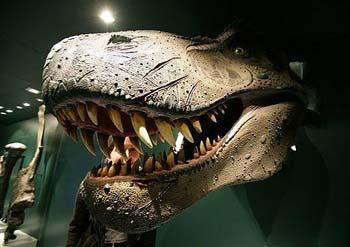Source: Xinhua
03-19-2009 14:02
Special Report: Tech MaxBEIJING, March 19 (Xinhua) -- Dinosaur fossils recently discovered in northeast China's Liaoning province have bewildered scientists about the evolutionary development of feathers.
 |
| Dinosaur fossils recently discovered in northeast China's Liaoning province have bewildered scientists about the evolutionary development of feathers.(File photo) |
The sub-adult Tianyulong Confuciusi, which was covered with feather-like structures, dates back to the early Cretacious Period(144-99 million years ago), when the first dinosaurs emerged - long before anything like feathers had been believed to have started developing.
And the find, described in the journal Nature, presents another stumper: "This order of dinosaur was never supposed to have had anything like feathers," Chinese Academy of Geological Sciences paleontologist You Hailu was quoted by Thursday's China Daily as saying.
Tianyulong belonged to the Ornithischia, or "bird-hipped" order, which had been believed to have never developed any feather-like structures - that is, until Tianyulong was discovered with three patches of skin covered with "proto-feathers", more commonly known as "dino-fuzz".
The Ornithischia order also included lumbering armored sauropods, such as Triceratops and Stegosaurus.
It was theropods among the "lizard-hipped" Saurischia order that are known to have developed feathers and evolved into birds.
"Tianyulong is the first Ornithischian to have feather-like structures all over its body," You said.
"In addition, it belongs to the heterodontosaurids, the most evolutionarily basal branch of the entire great radiation of herbivorous dinosaurs, the Ornithischia."
Tianyulong had a gracile body, estimated to be 70 cm long, a 6-cm-long cranium and a 44-cm-long tail.
Ohio University professor Lawrence M. Witmer said Tianyulong's discovery has "made an already confusing picture of feathers' origins even fuzzier".
Feathers were believed to be an exclusively avian attribute, found in all birds today and extending back some 150 million years ago to the iconic Archaeopteryx of the Late Jurassic Period.
-- Click for more news in Tech Max >>
